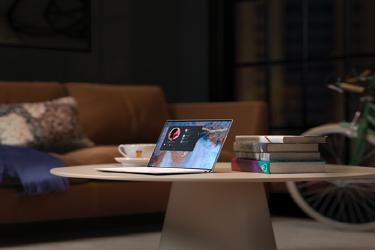
“This wouldn’t work for me, it’s way too much”… “Do you even have time for a spontaneous thing?”…“I don’t want to be trapped into doing things if I feel like doing something else."
I often hear all of those when I talk to people about my productivity system. People always seem to think my productivity system is restrictive and they wouldn’t be able to ever do something like that. Yet I’ve never felt so free as I am right now. I’m free to spontaneously push things to respond to emergencies. I’m free to decide where and how I will spend my time. I’m free to plan my tasks and priorities in the day. So why does it seem as if there’s a weird discrepancy between those two? I think some of the main misunderstandings are the high cost of structure, the building of habits and customization of a system and finally the power of knowing what to do next.
Before we get going, let’s start with how my system works, so you can get a sense for yourself.
System
My productivity system is a mix of many systems out there like Collect.Organize.Do, Getting Things Done, Second Brain, Just-in-time Project Management and my own experimentation. Over the years I also tweaked and changed things based on how I like to work. Overall it helps me keep track of things to do, ideas, dreams, projects, events, etc. nearly everything I do.
- Structures
- Daily reviews: Those reviews are mainly going over leftover tasks. Tasks I couldn’t get done, new tasks, and daily maintenance to stay on top of things. I do two of those every day for five to ten minutes each. One is after work for the work tasks then the other one is in the evening for personal tasks.
- Weekly review: That review is higher level than daily. It’s where I try to plan the following week’s task, events, meeting, etc. and block time for important projects. I do one every Sunday for around an hour.
- Monthly review: This one is even a step higher level from weekly. It’s where I try to see the following 2 months. I also keep track of my general goals and direction in life. That allows me to stay on top of longer coming deadlines and projects. I do one every last week of the month for around an hour or two.
- Day-2-day:
- I take notes of all ideas that I come across and find interesting throughout the day in my Evernote inbox.
- I create task or project in my Todoist inbox as I think of them or remember them.
- I use the JIT PM methodology for creating small projects just in time as I get assigned things at work.
High cost of structure
Does it feel like much to you? It is too much for most people I talk to, unless they have themselves their own system. People tend to add a lot of unneeded structures to their system and then feel trapped. As Tiago Forte puts it: “Defining a structure too early in the process not only consumes your time and attention, it presents real risks. It can blind you to ideas that don’t fit the structure. It can create unnecessary hierarchy and complexity before it’s needed. It can keep you from getting started because it seems to require a lot of dedicated effort." I also was in the same boat at first. That list of structures was double the size at the beginning. I tried blocking every hour of the day, have 20+ tasks every day, my reviews also easily took 20 minutes. That workflow would take me at least an hour every day to keep track, move and adjust as life happens. I was grossly underestimating the cost of structure and thought it was a price to pay for productivity.
That’s the point where I decided to step back. I took a lot of time thinking and looking at other people’s system. Then I removed most of the overhead structure in my system, down to the bare minimum. No more than 10 tasks every day, things with a date and time goes on calendars not task list, no tracking the same thing in multiple places, reviews to the bare minimum of what’s needed. That bare minimum finally showed the system itself doesn’t have to restrict you or force you, but it needs stripping down to allow flexibility.
Habits and Customization
“Be the designer of your world and not merely the consumer of it.” ― James Clear
To go one step from there, customize or build your own system. With the help of habits, customizing will allow you to make the system work for you in the background. People often take a system they found from someone else and “copy paste” it. Then they try it for a couple weeks, maybe a month and it inevitably bogs down. From there we’re back into feeling squeeze and pressured not free. What if often unseen is the power of habits and customization of a system. If I take a fully working system and apply it for myself a lot of it will be unnecessary structure, back to point one. On top of that the person who built it most likely has also built habits, they had or wanted to have into it.
You can actually take examples from a working system, like I did. I took some process, like the way they framed the reviews, the way you prioritize your tasks, the way you triage incoming tasks, but not all of it. You have to customize it to your own way of thinking and doing. If you build your own habits and way of thinking into it the system will work for you, not pressure you into working for it. Habits are often hard to see and customization takes time and experimentation but a custom system will blend into the background. Then if it’s just doing its thing in the background, you’re free to do other things without fear.
The power of knowing exactly what to do next
“Doing this [planning] at the end of your day prepares you for tomorrow, puts you into a proactive state […] and reduces stress because you know what you are going to be doing and how you are going to get it done.” - Carl Pullein
While you’re reading this, do you find yourself thinking what you could/should be doing instead? If so, please take a moment to write it down then come back. That simple act of writing things down is very freeing. Now, it is hard to realize the power of knowing exactly what to do next before living it. Most people think planning ahead would be too restrictive and would prevent spontaneous decisions. Some also fear it might prevent them from responding to work problems or they wouldn’t be as creative. Those same people often don’t know what they have to do when they wake up in the morning, other than maybe a meeting or some predetermined events. Then they arrive at work and get thrown a new task. They get going on that new task. After lunch break an important email arrive and they get thrown off once again. Then they finally arrive home and remember they had to finish that report by lunch time, oops.
Now, maybe that email was more important than the report, but how do you know if you forgot said report? On the other hand, if you have a list of the 10 things you need to be doing today, that decision is a lot easier to make. You can be effective since you know what is coming and their priorities. Knowing I have a report to be done by lunch time gives me the freedom to take that new task and push it back another time. It’s not forgotten since it’s in my system, but at the moment what I should be doing is the report. That makes me both flexible and effective and it also works for personal things. What if I get invited out of the blue to a restaurant by an old friend coming into town? Knowing exactly what I had planned in the evening allows me to go eat with my friend, then move the rest another time. I’m free to say yes without fear, because I know what will be pushed out and when I can push them too. The power of knowing exactly what to do next allows me to be flexible yet effective as I go in my day.
Freedom?!
Hopefully by now you can tell why productivity for me is freedom. My bare minimum custom-made system allows me to know exactly what to do when. This in turn gives me lots of flexibility and freedom. I’m free to spontaneously push things to another time and respond to emergencies. I’m free to go to unplanned activity with friends and family without fear of forgetting things. I’m free to do things that are important for me while I let my system works in the background. I trust that my system will make sure everything is going as planned. I’m free to invest time in activities I want to pursue, like this blog, knowing nothing else important need my attention.


